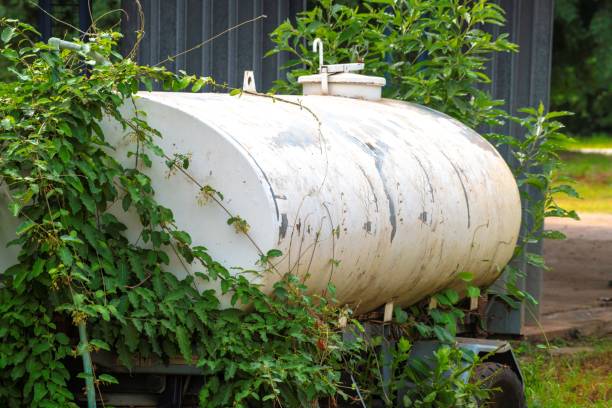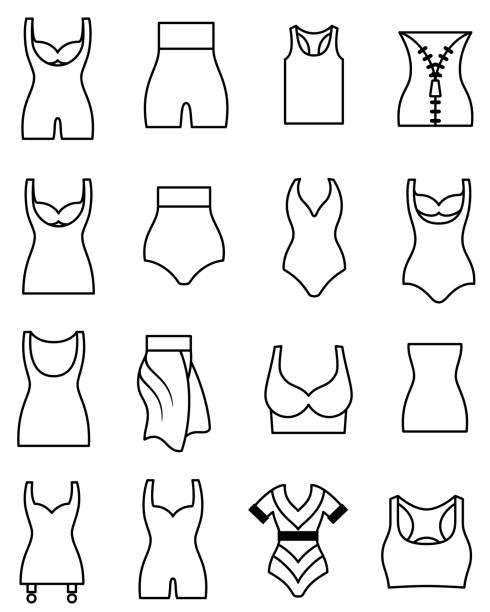Blog
Drag Link: The Essential Guide to Understanding Its Uses

A drag link is an essential component in the steering system of vehicles, playing a crucial role in ensuring smooth and precise steering. This guide will explore what a drag link is, its purpose, how it works, and its common issues to provide a complete understanding of its importance in vehicle performance.
What Is a Drag Link?
A drag link is a mechanical component that connects the steering gearbox to the steering knuckle or other parts of the steering system. It acts as a bridge, transmitting steering movements from the steering wheel to the wheels.
The Purpose of a Drag Link
The primary purpose of a drag link is to transfer the steering motion to the front wheels of the vehicle. This ensures that the wheels turn as the driver directs, providing accurate control and handling.
How Does a Drag Link Work?
When you turn the steering wheel, the motion is transmitted through the steering gearbox. The drag link then carries this motion to the steering knuckle, enabling the wheels to pivot in the intended direction. It works seamlessly with tie rods and other steering components to maintain alignment and stability.
Key Components of a Drag Link System
- Ball Joints: Allow smooth rotation and flexibility.
- Bushings: Provide cushioning and reduce friction.
- Tie Rod Ends: Connect to the steering arms to complete the motion transfer.
Types of Drg Links
- Single Drg Link: Found in simpler steering systems, connecting directly to the steering knuckle.
- Split Dra Link: Common in heavy-duty vehicles, offering added stability and precision.
Importance of a Drg Link in Vehicle Steering
Without a properly functioning drg link, steering precision and safety are compromised. It ensures that the vehicle responds accurately to the driver’s input, which is critical for maneuverability and road safety.
Signs of a Faulty Drg Link
- Loose Steering: Excessive play in the steering wheel.
- Uneven Tire Wear: Misalignment caused by drg link issues.
- Noisy Steering: Clunking sounds when turning.
- Vehicle Drifting: Difficulty in maintaining a straight line.
Causes of Drg Link Problems
- Wear and Tear: Over time, components like ball joints wear out.
- Corrosion: Rust can weaken the drg link’s integrity.
- Improper Maintenance: Neglecting routine checks can lead to early failure.
How to Inspect a Drg Link
- Visual Inspection: Look for signs of rust, cracks, or damage.
- Physical Testing: Wiggle the drg link to check for excessive play.
- Professional Assessment: Have a mechanic assess the steering system regularly.
Maintenance Tips for a Healthy Drg Link
- Regular Lubrication: Keeps joints moving smoothly.
- Alignment Checks: Ensures the steering system remains calibrated.
- Immediate Repairs: Address issues promptly to avoid further damage.
How to Replace a Faulty Drag Link
- Step 1: Lift the vehicle and secure it safely.
- Step 2: Remove the old drg link using appropriate tools.
- Step 3: Install the new drg link and tighten it to specifications.
- Step 4: Test the steering alignment and functionality.
Cost of Replacing a Drag Link
The cost varies depending on the type of vehicle and labor rates. On average, expect to spend between $150 and $300 for parts and labor combined.
How to Extend the Lifespan of a Dag Link
- Drive Gently: Avoid excessive turning force or rough handling.
- Routine Maintenance: Follow the vehicle’s service schedule diligently.
- Avoid Water Damage: Protect the steering components from prolonged exposure to water.
Impact of a Faulty Drg Link on Vehicle Safety
A damaged drg link can severely impact your ability to control the vehicle, increasing the risk of accidents. Addressing issues promptly is essential for safe driving.
The Future of Drg Link Technology
As automotive technology advances, drg links are evolving with stronger materials and designs. Some systems now incorporate electronic steering enhancements for improved precision and durability.
Conclusion
A drag link is a vital part of any vehicle’s steering system, ensuring precise and safe operation. Regular inspections, timely maintenance, and prompt repairs are crucial to keeping it in top condition. Understanding the drg link’s function and importance not only enhances your vehicle’s performance but also ensures your safety on the road.
FAQs
What happens if a drag link fails while driving?
If a drag link fails, steering control may be lost, making it extremely dangerous to drive. Immediate repair is necessary.
How often should a drag link be inspected?
It is recommended to inspect the drag link during every routine service or at least once a year.
Can I drive with a loose drg link?
Driving with a loose drg link is unsafe as it can lead to unpredictable steering and accidents.
How long does a drg link typically last?
With proper maintenance, a drg link can last between 50,000 and 100,000 miles.
Are drg links the same as tie rods?
No, drg links and tie rods serve different purposes in the steering system, though they work together for vehicle alignment.
Blog
Signs It’s Time to Replace Your Oil Tank: A Comprehensive Guide

Understanding Oil Tank Lifespan
Oil tanks are an integral component of many heating systems in homes, providing warmth and comfort during cold seasons. Typically, these tanks have a lifespan of 15 to 20 years, which can be influenced by material quality, the environment they are exposed to, and how well they are maintained. For example, tanks made from fiberglass may last longer than those constructed from steel, particularly if located in a humid area prone to rust.
Regular maintenance is crucial to prolong a tank’s lifespan; this includes routine inspections for any signs of wear or damage. With proper care, a well-maintained tank can indeed reach its maximum life expectancy. If you find your oil tank is approaching this age bracket, it might be a wise decision to start considering oil tank services Cornwall on Hudson NY, to help guide you through a smooth replacement process.
Common Indicators of Oil Tank Failure
Detecting the early signs of a failing oil tank can save homeowners from significant stress and expense. Unusual odors often signal a leak or spillage, indicating potential oil tank failure. Rust, corrosion, and discoloration also suggest compromised structural integrity. These imperfections can occur from constant exposure to weather elements or due to interactions with the oil stored inside the tank.
Moisture accumulation around the base of the tank or unexplained puddles could indicate leaks. Monitoring these signs carefully is crucial as they can lead to severe problems if not addressed promptly. Repairing a small leak is significantly easier and less expensive than managing widespread soil contamination, which can occur when problems are ignored.
Potential Risks of Delaying Replacement
Procrastinating on replacing a worn-out oil tank can result in dire consequences. A delay can lead to leaks that contaminate soil and groundwater, posing environmental hazards and potential health risks for the community. In such scenarios, homeowners may face cleanup costs, which can be exorbitant, but they might also deal with legal fees and fines imposed by governmental bodies for non-compliance with environmental regulations.
The costs of rectifying environmental damage far outweigh those associated with timely tank replacement. Moreover, replacing an oil tank on time ensures that heating systems will remain reliable when they are needed most, providing peace of mind to homeowners.
Advantages of New Oil Tank Models
The innovations embedded in contemporary oil tank models have made significant strides in improving both performance and safety. Manufacturers often use advanced, corrosion-resistant materials like polyethylene or fiberglass to build newer oil tanks, replacing traditional steel. These materials are not only more durable but also lighter, easing the installation process.
Modern tanks also come equipped with safety features, such as leak detection systems and improved valves, which help prevent accidents. Additionally, these tanks can offer higher energy efficiency, translating to possible reductions in heating costs over time. The advantages of upgrading to a newer model extend beyond just financial savings; they contribute to family safety and environmental responsibility.
Environmental and Safety Considerations
When considering an oil tank replacement, it is essential to evaluate environmental impacts and safety standards. Upgraded tanks are designed to comply with stringent environmental regulations, which aim to minimize harm. Following the EPA guidelines on heating oil tanks ensures that installations meet necessary standards, reducing the risk of costly penalties and environmental degradation.
Prioritizing tasks that align with these guidelines secures compliance and promotes long-term sustainability. Opting for environmentally friendly options helps safeguard natural resources and contributes to reducing the carbon footprint.
Choosing the Right Tank for Your Needs
One of the most pivotal decisions in replacing an oil tank involves selecting the appropriate model that meets specific residential needs. Homeowners must deliberate on the tank’s size by examining their oil consumption patterns. A correctly sized tank ensures efficient heating without unnecessary energy waste, which can add up financially over time.
The choice between an above-ground or below-ground tank is another critical consideration. While above-ground tanks are generally more accessible for maintenance and less expensive to install, below-ground models can save space and offer discrete storage. Evaluating these factors based on personal priorities and local zoning regulations is essential in the decision-making process.
Financial Aspects of Oil Tank Replacement
Understanding the financial commitment involved in oil tank replacement can prepare homeowners for the investment and potential savings. While initial expenses might seem significant, the long-term financial benefits from improved efficiency and reduced risk of leaks often justify these costs.
Many insurance companies acknowledge the lower risk associated with new oil tanks, which can lead to reduced premiums for homeowners. It’s worthwhile to inquire about these potential savings when planning for a tank upgrade. Additionally, newer, more efficient tanks might also translate into lower heating bills, contributing further to long-term cost benefits.
When and How to Contact a Professional
Once you observe any warning signs of potential oil tank failure or if your tank is approaching the end of its expected lifespan, it’s time to seek professional consultation. Hiring certified professionals ensures correct replacement and full compliance with safety standards. Their expertise guarantees peace of mind and quality results.
Qualified professionals have the expertise to assess the condition of your current tank accurately and make informed recommendations on suitable replacements, installation methods, and maintenance plans, providing comprehensive support throughout the process.
Blog
It Isn’t Scary: Getting Started with Horse Jumps

Introduction to Horse Jumps
Horse jumping is an exhilarating and challenging sport that many equestrians aspire to master. For newcomers, however, the idea of tackling horse jumps can seem intimidating. Yet, getting started is not as scary as it seems. With the right guidance, preparation, and practice, newcomers can achieve remarkable skill levels. Understanding the various aspects of horse jumping, from safety to technique, is crucial for building a solid foundation. Moreover, exploring a variety of horse jumps and their features can be an exciting part of the learning process, providing insights into what to expect and how to prepare for different jumping scenarios.
Essential Equipment for Beginners
Before approaching your first jump, it’s essential to have the right equipment. Safety is paramount, and investing in quality protective gear is non-negotiable. A well-fitted helmet is crucial to protect against falls and injuries, offering peace of mind to both rider and horse. Proper footwear, specifically riding boots, ensures superior grip and stability in the stirrups, which is vital during jumps. The right boots also protect against friction and offer support, which can prevent injuries. Equally vital is a well-fitted saddle, which provides the comfort and control necessary for both rider and horse. A stable saddle lessens the risk of accidents by allowing riders to maintain better balance during jumps, thereby enhancing performance and safety.
Understanding Different Types of Horse Jumps
Horse jumps come in various forms, each designed to test different skills and challenge both horse and rider in unique ways. Beginners should familiarize themselves with common types, such as verticals, oxers, and triple bars, to build a foundational understanding. Verticals are single, straight bars that require precision and control, demanding the horse to make a clean, sharp leap. Oxers include two or more parallel rails, necessitating a longer jump and requiring more effort and coordination from the horse. Triple bars, on the other hand, consist of three rails placed at different heights, presenting a complex challenge that tests the horse’s ability to stretch and the rider’s timing in the jump. Learning the nuances of each type can significantly enhance both a rider’s confidence and performance.
Staying informed about the latest trends and practices in horse jumping is also invaluable. Resources like the United States Equestrian Federation’s website offer updates and insights that can provide both novices and experts with useful knowledge. By keeping abreast of innovations and techniques, riders can adapt and improve their skills, ensuring they are always progressing and keeping their training fresh and exciting.
Training Techniques for Success
Successful horse jumping requires consistent training and a well-structured approach to practice. Beginners should adopt a gradual approach, starting with smaller jumps that build foundational skills without overwhelming the horse or rider. This method helps build confidence and allows riders to develop skills gradually, reducing the risk of accidents caused by attempting too much too soon. Regular practice is crucial; it reinforces techniques and strengthens the bond between horse and rider, fostering mutual trust and understanding, which are essential in overcoming challenges. Equally important is the feedback from experienced coaches, who can offer constructive advice to correct mistakes and enhance performance, ensuring that each session brings valuable insights and improvements.
Training Steps for Beginners
- Start Small: Begin with ground poles and low cross-rails to focus on technique, allowing riders to get comfortable with the idea of jumping without the pressure of height.
- Build Consistency: Establish a routine practice schedule to ensure steady progress, helping to build muscle memory and increase skill levels naturally over time.
- Incorporate Feedback: Take lessons and heed advice from more experienced riders or trainers, using their insights to hone techniques and address any areas of difficulty with expert guidance.
Setting Achievable Goals
Setting small, achievable goals is vital to maintaining motivation in horse jumping. Begin with goals that are manageable and build towards more challenging objectives over time, ensuring that progress is steady and realistic. Celebrating small victories along the way can spark momentum and sustain enthusiasm, providing positive reinforcement that encourages continued effort. Whether it’s successfully completing a particular jump, mastering a specific technique, or simply building confidence, acknowledging these achievements is key to a fulfilling journey in horse jumping. Such an approach transforms challenges into stepping stones toward greater accomplishments.
Conclusion: Embracing the Journey
Ultimately, horse jumping is about enjoying the journey as much as the destination. With patience, the right support, and a positive attitude, anyone can learn to jump with confidence and joy. Embrace each step of the journey, from the early days of trepidation to the rewards of skill and mastery. The path to becoming a proficient jumper is a testament to the rider’s dedication and the horse’s trust, beautifully woven together in this captivating sport. It is a journey defined by perseverance, growth, and the joys of shared success, making even the smallest accomplishments worthy of celebration.
Blog
Discover Confidence with Shapellx: Elevate Your Silhouette

In today’s fashion-forward world, achieving a seamless and confident look is paramount. Shapellx stands at the forefront, offering innovative shapewear solutions that blend comfort with style. Whether you’re seeking a bodysuit with tummy control, an underwire push-up bra, or the best shapewear for tummy, Shapellx has you covered.
Sculpt Your Silhouette: Bodysuit with Tummy Control
The bodysuit with tummy control is a testament to Shapellx’s commitment to quality and functionality. Designed to provide a sleek, mid-thigh contour, this bodysuit not only flattens your tummy but also lifts your chest and buttocks for an all-over flattering shape. The mesh material ensures breathability and comfort, making it ideal for wearing throughout the day. Embrace your curves with confidence as this shapewear smooths your thighs and delivers the ideal airflow for that comfortable shaping experience.
Elevate Your Confidence: Underwire Push-Up Bra
Complement your shapewear with the underwire push-up bra, meticulously crafted to offer both support and elegance. This bra features supportive underwire cups for extra support, flexible side boning to ensure reliable support that stays in place, and adjustable straps for a personalized fit. The high-coverage design in the underarms and back provides a smoothed-out look, while the soft cups lined in light foam ensure all-day comfort. It’s the perfect blend of functionality and style.
Achieve the Best: Best Shapewear for Tummy
For those seeking the pinnacle of tummy control, the best shapewear for tummy truly stands out. To begin with, this full-body shaper is expertly designed to deliver a slim and controlled look with minimal effort. Moreover, it features a convenient bodysuit panty style, along with an inner hook and zipper design for added security and ease. Additionally, the open bust design allows you to wear it with your favorite bra, ensuring versatility in your wardrobe. In contrast, the open crotch design ensures hassle-free bathroom access, making it especially practical for daily use. Furthermore, its butt-lifting feature fully wraps and enhances the hips, resulting in a beautifully sculpted silhouette. Lastly, with flexible shoulder straps and anti-allergic fabric, this shapewear remains both comfortable and confidence-boosting throughout the day.
Why Choose Shapellx?
Shapellx is more than just a brand; it’s a movement toward embracing one’s natural beauty with a little enhancement. Each product is thoughtfully designed, ensuring that you don’t have to compromise on comfort to achieve the look you desire. With a range of sizes and styles, Shapellx caters to diverse body types, ensuring everyone finds their perfect fit.
-

 Blog2 months ago
Blog2 months ago鲁Q 669FD: Understanding Vehicle Registration in China
-
Tech5 months ago
IPv6 Internet Is Broken
-

 Blog3 months ago
Blog3 months agoSwatapp.me المانجا: Your Gateway to the World of Manga
-

 Tech1 month ago
Tech1 month agoWepbound: The Future of Web Development
-

 Business2 months ago
Business2 months agoUnveiling adsy.pw/hb3: Revolutionizing Content Marketing Strategies
-

 Tech5 months ago
Tech5 months agoScamalytics: Revolutionizing Scam Detection in the Digital Age
-

 Tech5 months ago
Tech5 months agoWebmxhd: Revolutionizing Digital Connectivity
-

 Business1 month ago
Business1 month agoadsy.pw/hb5: Comprehensive Guide to Online Success Strategies
